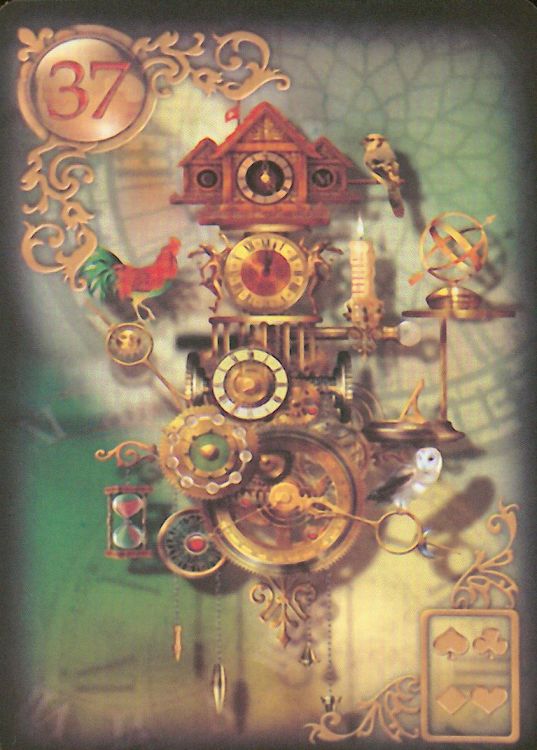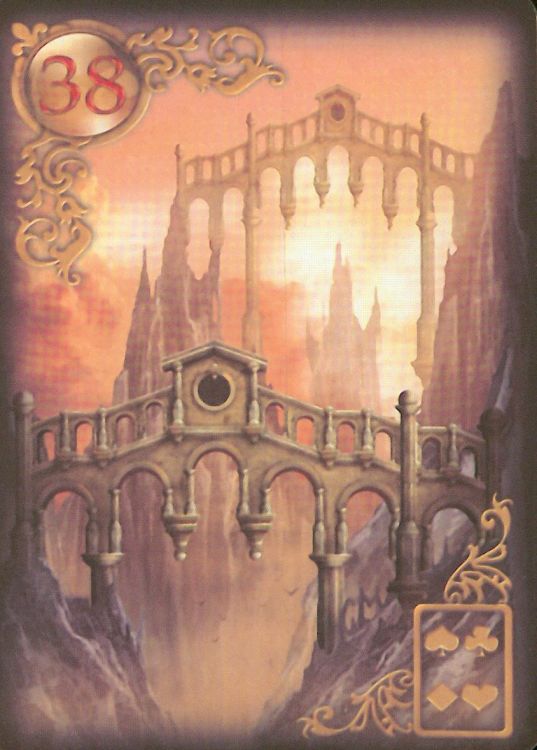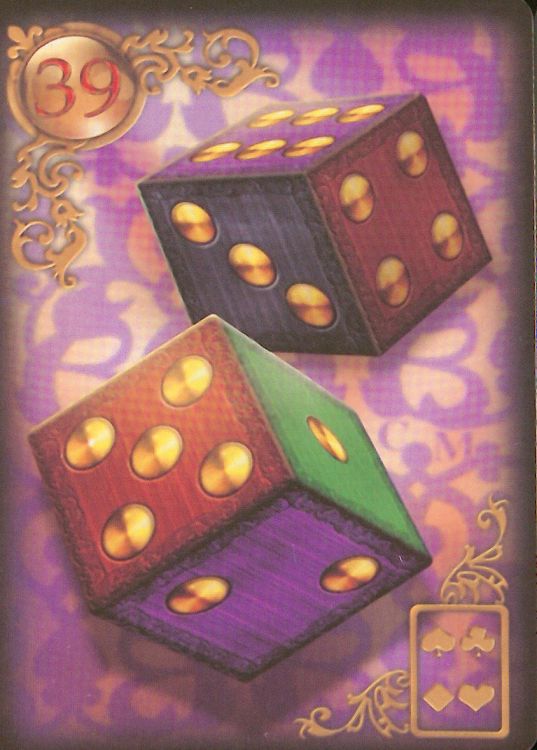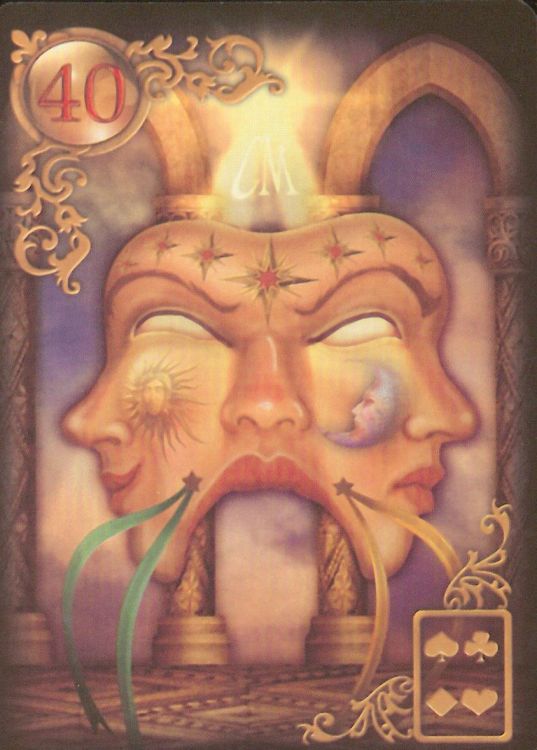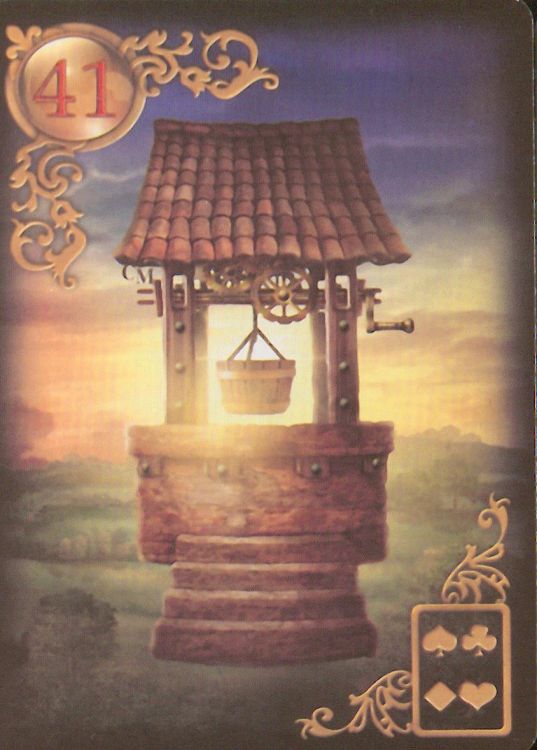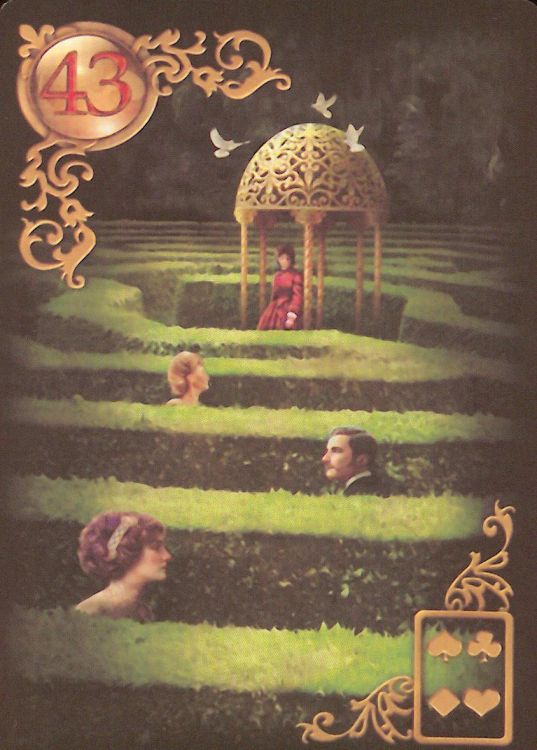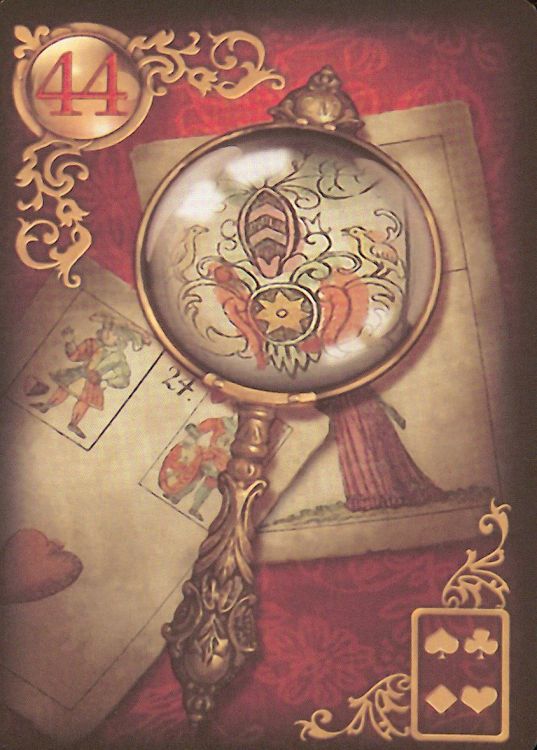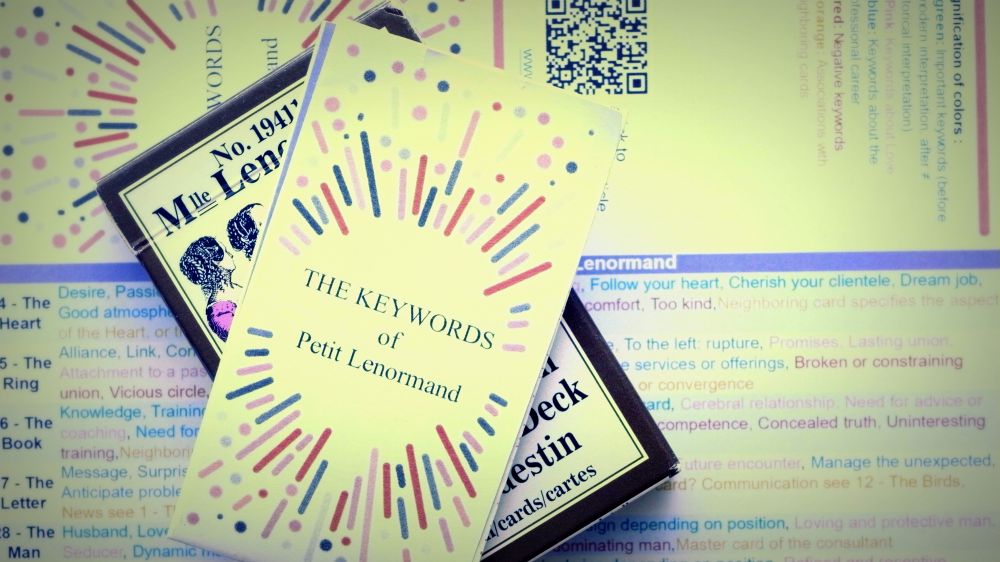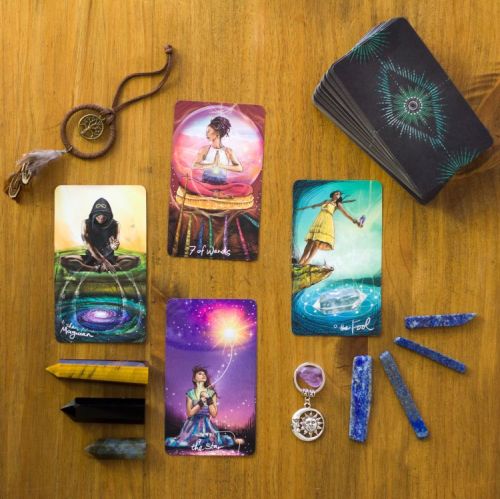I would like to commend Ciro Marchetti's initiative, who, with the creation of eight bonus cards, demonstrates a commitment and a desire to offer a most complete game. These cards, embodied by objects and places, bring a universal dimension to the game, as exemplified by the Bridge, the Dice, the Masks, the Compass, and the Magnifying Glass.
However, I must admit that, despite their universal character, these objects do not possess, in my opinion, the symbolic richness of animals such as the Dog, the Bear, or the Snake, whose meanings vary greatly from one culture to another, thus enriching the paradox and divinatory interest of these figures.
Symbols such as the Moon, the Sun, the Tree, the House, or the Ship, although as generic as the Magnifying Glass or the Compass, hold a much deeper interpretative density, a resonance with the human that transcends that of objects.
When you explore the Lenormand system, I encourage you to personalize your interpretations, to make them unique while maintaining coherence with the symbolism of the cards. Do not hesitate to integrate the bonus cards with the 36 traditional cards, or even to substitute them for some of them. The Magnifying Glass could replace the Letter or the Book or even the Mice, the Compass the Star, the Masks the Garden, the Bridge the Path, the Dice the Fox, and so on.
Your sensitivity and imagination are the only limits to the exploitation of the Lenormand system. For example, concerning card 42, the Compass, it indeed shares similarities with the Star, especially in the "Guild Raveries" game where the central star evokes a compass dial, and the compass itself, adorned with a solar head, recalls card 31 of the Sun and its sundial. These links, whether intentional or not on the part of the author, invite you to replace and substitute cards with each other, or at least simply make connections between the cards.
Finally, I encourage you to use the blank cards provided in some games, like "Gilded Reverie", to add your own symbols, objects, places, animals, or others. It is almost regrettable that the author did not include more blank cards, as this would have offered a real opportunity to enrich your favorite Lenormand with a personal touch.
Do not forget that your own interpretation is the key to a successful Lenormand reading.


